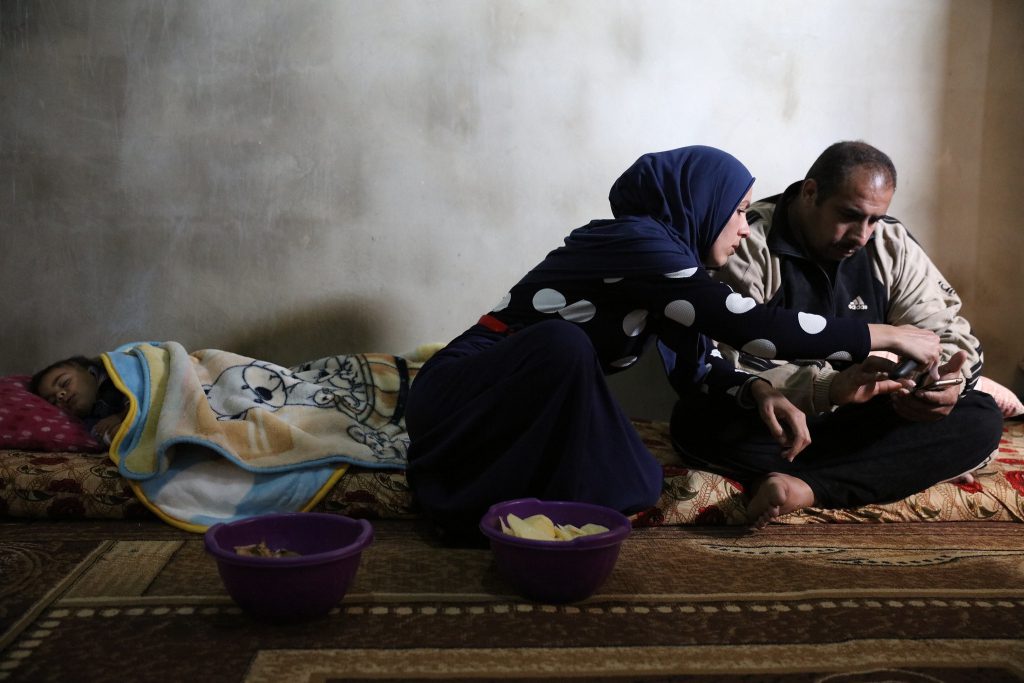How do you define home? Is it a place? A person? A feeling? A photo album of your childhood memories?
Let’s try something else. How do you define home as a displaced refugee? Here, home carries an arbitrary and subjective definition, entailing a completely distinguished experience. The home of a refugee can come in all shapes and forms.
The journey ‘home’ for refugees is a fearful process, often messy, plagued with uncertainty, and possibly threatening to their well-being. Common concerns include their impending safety and security, housing, access to basic services, and issues of legality.
On A Global Scale
Eight years into the Syrian Civil War, the crisis has abetted the perpetual displacement and migration of over five million individuals, whether to seek safety or to escape a tribal history of political discourse. It is now the case that more countries than not have opened their borders to refugees, who have found themselves across all ends of the world.
Currently, Lebanon is hosting the highest number of refugees per capita. There are great international interests in keeping refugees in Lebanon. International aid has been pouring in for years, a contribution to humanity doubling as a cushion for the Lebanese nation to fall on as its infrastructure worsens for a variety of social, economic, and financial reasons.

Only around 23 percent of refugees in Lebanon have legal standing, leaving many without rights, education, or guaranteed employment, and at risk of exploitation and abuse.
Regardless of international support, there is still plenty of uncertainty for refugees. Only around 23 percent of refugees in Lebanon have legal standing, leaving many without rights, education, or guaranteed employment, and at risk of exploitation and abuse.
“Lebanese policies have restricted access to legal residency, work, and education,” said Aya Majzoub, a researcher at Human Rights Watch Lebanon. She added that these conditions “have put so much indirect pressure on refugees that some believe they have no option but to return to a country where they face serious risks to their lives.”
Interestingly enough, the nation is recognized internationally as a model of resilience. However, the nation is flailing, handling refugee and crisis management without a clear and consistent framework.
On A National Scale
From 2011 to 2014, more than 1.5 million refugees crossed the borders into Lebanon, probing a longstanding arrangement that opened the Lebanese-Syrian border to both communities, encouraging shared trade, businesses, and culture. To this day, Lebanon has failed to provide a defined framework for handling the large influx of people coming through the borders.
The Lebanese government has since retracted their open-border policy with Syria, as 2015 saw the tightening entry and exit policies and required that refugees entering the country obtain a six-month residency permit subject to renewal. Once in the country, rights of Syrians are not recognized or regulated by international law, and living conditions are harsh. Access to basic needs is inconsistent, with 75 percent living below the poverty line and many residing in informal settlements in the Bekaa Valley, the North, and the South.

Furthermore, their position in the social sphere is exclusionary. The prejudiced perspective of a majority of Lebanese society paints refugees as uneducated, helpless, and aggressive.
“Syrian refugees are perceived as an existential threat for Christians, a security threat for Shiites, and an economic threat for underprivileged Sunnis living in areas were Syrians have settled in masses.”
Highly polarized relations between Syria and Lebanon exist as a follow-through effect of the Syrian government and army’s heavy involvement in the Lebanese Civil War.
“Syrian refugees are perceived as an existential threat for Christians, a security threat for Shiites, and an economic threat for underprivileged Sunnis living in areas were Syrians have settled in masses,” reads a report by the Issam Fares Institute of the American University of Beirut.
The polarizing nature of Arab sectarianism is all abetting to the strict understanding of the refugee situation. There is a distaste for refugees for fear that conflict perpetuates, that there will be nothing left for the Lebanese. Both the deteriorating economy and a government that does not take a consistent stance on the matter further cement these fears.
At least 3,664 Syrian nationals were evicted by 13 municipalities around the country from 2016 to the first quarter of 2018, according to HRW statistics. Another 42,000 remain at risk of being homeless. Documentation and personal accounts do not resonate peacefully, with many evictions inciting violence, discrimination, and no proper grounds to back these actions.

The Minister of State for Refugee Affairs, Saleh Gharib, announced in mid-February 2019, that his ministry would refuse to allow refugees to resettle and integrate into Lebanese host communities. He cited issues with nationality, religion, safety concerns, and housing infractions.
Currently, there are three separate plans in effect working to return refugees to their homes in Syria. The first is a cohesive and internationally recognized process involving Lebanese General Security and the UNHCR, who are profiling and facilitating the refugees wishing to return to Syria. In this process, UNHCR staff assists refugees with their access to places of return, ensuring all required documents are present and available. In parallel, UNHCR in Syria is diligently working to ease the return.
The Shiite Hezbollah is also aiding the return of refugees, opening centers around the country that will help refugees “receive all the information” they may need before returning. In coordination with the Syrian regime and Lebanese General Security, they will be easing and facilitating the return, “alleviat[ing] concerns and provid[ing] incentives for return.”
Talks between the US and Russia also indicate their desire to aid the return of refugees, but a solid framework has yet to be put in place by them.

On A Local Scale
Some local municipalities are adapting and implementing plans that serve local and migrant communities better than others.

For a long time, Bourj Hammoud has been a haven to several nationalities flocking to Lebanon –refugees from Syria are no exception. The heterogeneous population residing here includes individuals from North and East Africa, Armenia, Iraq, Southeast Asia, and Palestine.
“At the very beginning, the local associations willingly extended their existing programs to the new refugees. A few years into the crisis, they started developing a new formula to meet the extraordinary needs.”
Given the long-standing history of social cohesion, local communities and social networks have been put in place as a response to the refugee crisis, catering to the needs of the growing migrant population.
“At the very beginning, the local associations willingly extended their existing programs to the new refugees,” reads research by Marianne Madoré. “A few years into the crisis, they started developing a new formula to meet the extraordinary needs.”
The municipality has institutionalized a dense network of neighborhood associations, community centers, dispensaries, churches, religious centers, and children’s clubs.
While the northern town of Bireh has been understanding of the refugee crisis, its patience has run out. Mayor Mohammad Wahbi announced his decision to take action that would slowly, but surely, direct refugees back to Syria given the stability that is returning to their home country.
He stated that the municipality was prepared to keep accommodating the migrant population for another two-to-three years but that pressures on infrastructure, water, and electricity networks are becoming too overbearing.

Citing issues of infrastructure is the main scapegoat for parties looking for the departure of refugees. However, is international aid not easing this issue? Is there no way for the government to appease the situation with a framework that supports both migrant and local communities that are trying to sustain themselves?
“In the absence of regional frameworks to address this crisis, and amid fears of prolonged displacement, most countries in the region have responded with a non-integration paradigm that seeks to return refugees to their countries of origin,” reads a report from the Carnegie Endowment for International Peace.
Infrastructure pressures need to be addressed at a national level, rather than left to municipalities to decide on the livelihoods of people through racial policies. With the absence of a solution to the crisis, and the absence of an understanding of the needs of both local and foreign communities, pressure increases on the nation ten-fold.
“Any eviction of a Syrian refugee should be conducted in a transparent and lawful way following proper procedures,” said Majzoub. “And in cases where the evictions may be legitimate, proper procedures must be followed to make the evictions comply with accepted international standards.”
Reformations on a local, national, and international level need to reflect the fundamental needs of a person, albeit a person experiencing the turmoil of displacement.
When approaching the construct of an inclusive refugee framework, several aspects need to be regarded, including and definitely not limited to strategy development, institution building, and an unbiased political discourse that is accessible to both host and refugee communities.
“Any eviction of a Syrian refugee should be conducted in a transparent and lawful way following proper procedures,” said Majzoub. “And in cases where the evictions may be legitimate, proper procedures must be followed to make the evictions comply with accepted international standards.”
Encouraging refugee return is to encourage the return to a home. A safe, sustainable, and humane home.


